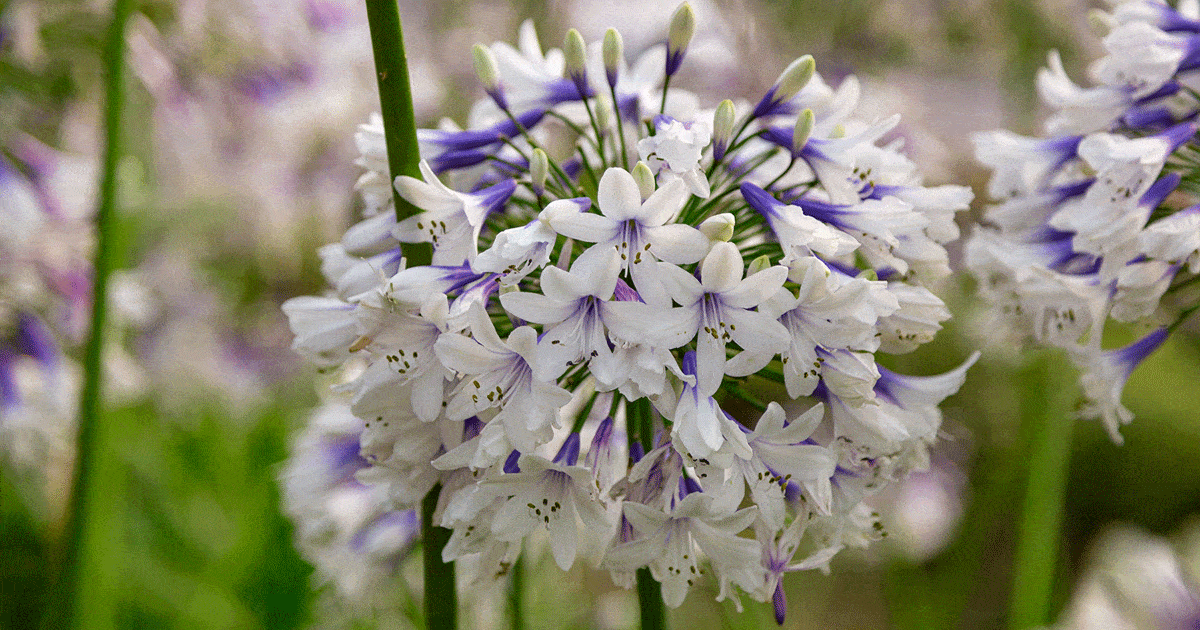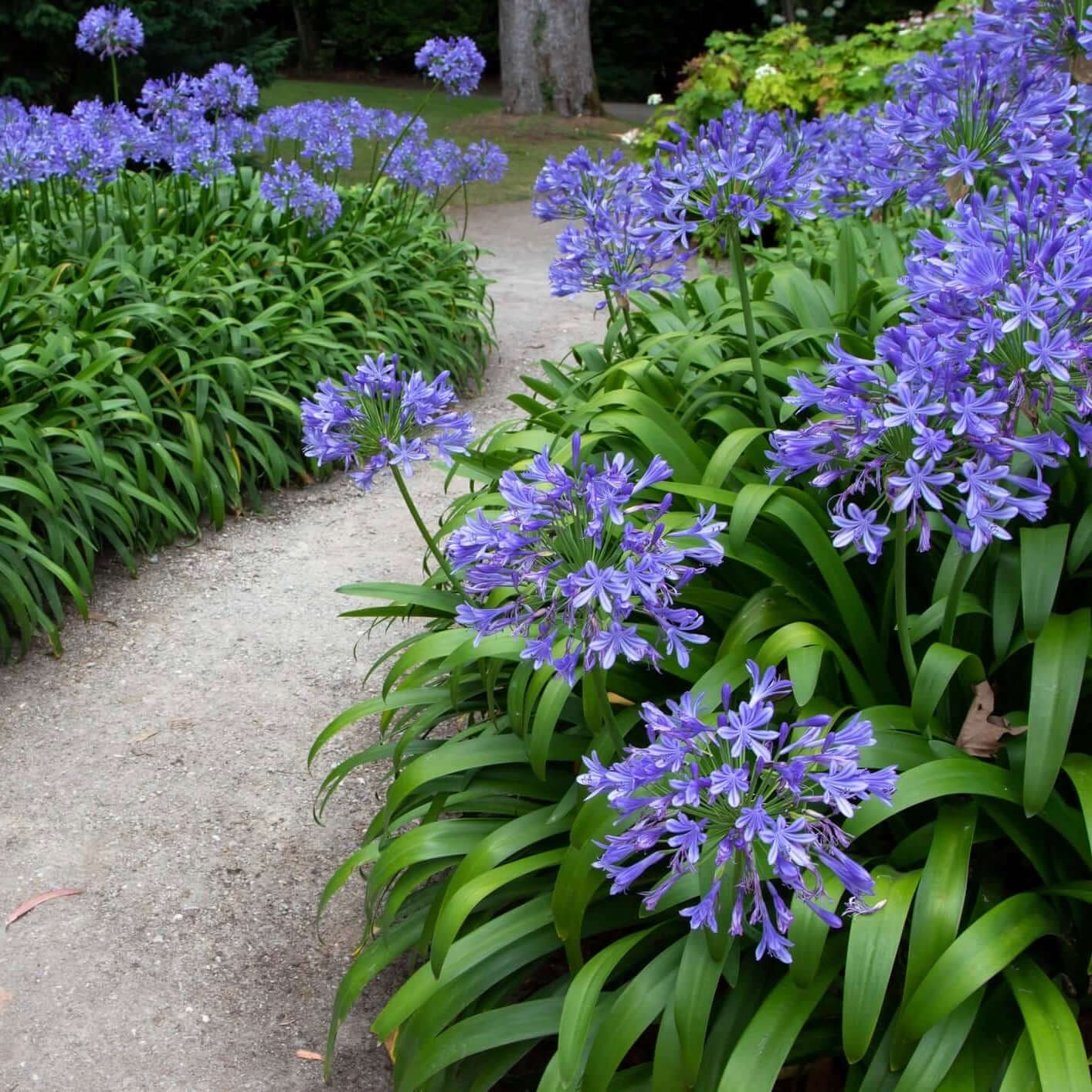Letting Loose the Secret to Successful Agapanthus Cultivation: Idea for a Flourishing Yard
In the world of gardening, growing agapanthus effectively requires a calculated strategy that includes numerous aspects of plant treatment. With mindful interest to information, one can open the tricks to nurturing these sensational blossoms, leading to a yard that prospers with elegance and vibrancy. By comprehending the nuances of agapanthus farming, one can develop an atmosphere where these plants thrive and grow perfectly. In the following discussion, we will certainly explore crucial ideas and methods that will assist you in the direction of a flourishing agapanthus garden, using insights into ideal practices, dirt conditions, sprinkling techniques, and extra.
Planting Agapanthus: Best Practices
When planting Agapanthus, appropriate dirt prep work is crucial for making sure effective development and advancement of these gorgeous blossoms. Agapanthus, generally known as Lily of the Nile or African lily, flourishes in well-draining soil with a slightly acidic to neutral pH degree - Agapanthus. Prior to planting, it is vital to amend hefty clay dirts with raw material such as compost or peat moss to improve drain and give crucial nutrients for the plants
To plant Agapanthus, pick a location that receives full sunshine to partial color, as this will promote healthy growth and plentiful blooming. Dig an opening two times the size of the plant's origin ball and put the Agapanthus at the exact same deepness it was formerly expanding. Carefully backfill the hole with soil, pushing down strongly to get rid of any air pockets around the roots.
Water the recently planted Agapanthus extensively and continue to keep the dirt equally moist, particularly during the plant's active expanding period. Agapanthus. Applying a balanced fertilizer once a month can even more sustain the plant's development and flowering. By adhering to these best techniques for growing Agapanthus, you can produce a sensational screen of these fascinating blossoms in your yard
Suitable Dirt Conditions for Agapanthus
For optimal development and flowering success of Agapanthus plants, making certain the dirt conditions are perfect is important. Agapanthus flourishes in well-draining soil with a somewhat acidic to neutral pH degree varying from 6.0 to 7.0. This kind of dirt allows for ample water drainage, preventing waterlogging which can result in root rot. To enhance dirt drainage, think about including natural issue such as garden compost or peat moss when preparing the growing site. Furthermore, Agapanthus prefers soil that is rich in nutrients, so including a well balanced fertilizer during the expanding period can promote healthy growth and lively flowers.

Watering and Feeding Tips
To make sure healthy development and vibrant blooms, appropriate watering and feeding techniques are crucial for successful Agapanthus cultivation. Agapanthus plants profit from routine watering, specifically throughout the growing season.
When it concerns feeding Agapanthus, a balanced fertilizer with equivalent parts nitrogen, phosphorus, and potassium can be used in the springtime to promote healthy and visit our website balanced development and blooming. Slow-release plant foods are ideal for providing nutrients gradually over an extensive period. Stay clear of over-fertilizing, as this can result in extreme foliage development at the cost of flowers.
Additionally, incorporating raw material like compost right into the soil can boost nutrient degrees and boost dirt framework, aiding in the overall health and wellness of the Agapanthus plants. By following these watering and fertilizing pointers, gardeners can guarantee their Agapanthus plants prosper and generate spectacular display screens of flowers.
Pruning and Deadheading Strategies
Proper pruning and deadheading methods play an essential duty in preserving the wellness and looks of Agapanthus plants, matching the essential methods of watering and feeding for effective farming. Pruning Agapanthus includes getting rid of invested flower heads, dead or yellowing leaves, and general shaping of the plant to advertise better growth. Deadheading, the procedure of removing discolored flowers, not just boosts the plant's look yet also motivates additional blooming.
When deadheading Agapanthus, it is a good idea to trim off the blossom stem at the base making use of sharp, tidy shears. This procedure reroutes the plant's power from seed production back into origin and vegetation growth, advertising a healthier and much more durable plant. Normal deadheading can extend the blooming duration of Agapanthus and stop self-seeding, which can cause congestion.
In regards to pruning, Agapanthus generally gain from a light trim after blossoming to clean up the plant and encourage fresh development. Cutting back the invested blossom stems and eliminating any broken or dead vegetation aids maintain the plant's vigor and general appearance. Nevertheless, it is vital to stay clear of reducing right into the crown of the plant, as this can deteriorate its health and wellness.

Protecting Agapanthus From Pests and Diseases
Applying effective pest and disease administration techniques is critical to securing the health and vitality of Agapanthus plants click to read more in cultivation. One typical insect that affects Agapanthus is the Agapanthus borer, a caterpillar that passages right into the plant, creating damage to the fallen leaves and flowers.
In enhancement to bugs, Agapanthus are susceptible to diseases such as origin rot and fungal leaf areas. By staying alert and addressing bug and illness problems promptly, garden enthusiasts can aid their Agapanthus grow and flourish.

Verdict
To conclude, successful farming of agapanthus needs proper planting strategies, suitable dirt conditions, sufficient watering and feeding, regular trimming and deadheading, and protection from bugs and conditions. By complying with these tricks and tips, gardeners can ensure a flourishing yard full of lovely agapanthus flowers. Agapanthus. Bear in mind to maintain regular care and focus to detail to promote the health and wellness and long life of these spectacular plants
When planting Agapanthus, appropriate soil preparation is see here now vital for ensuring successful development and advancement of these lovely blossoms.Water the newly planted Agapanthus thoroughly and proceed to keep the soil evenly damp, specifically throughout the plant's active expanding season.For optimal development and blooming success of Agapanthus plants, guaranteeing the soil problems are excellent is crucial. When planting or transplanting Agapanthus, guarantee the dirt is well-prepared to provide the required foundation for the plants to establish themselves effectively. One usual parasite that impacts Agapanthus is the Agapanthus borer, a caterpillar that tunnels into the plant, causing damage to the fallen leaves and blossoms.